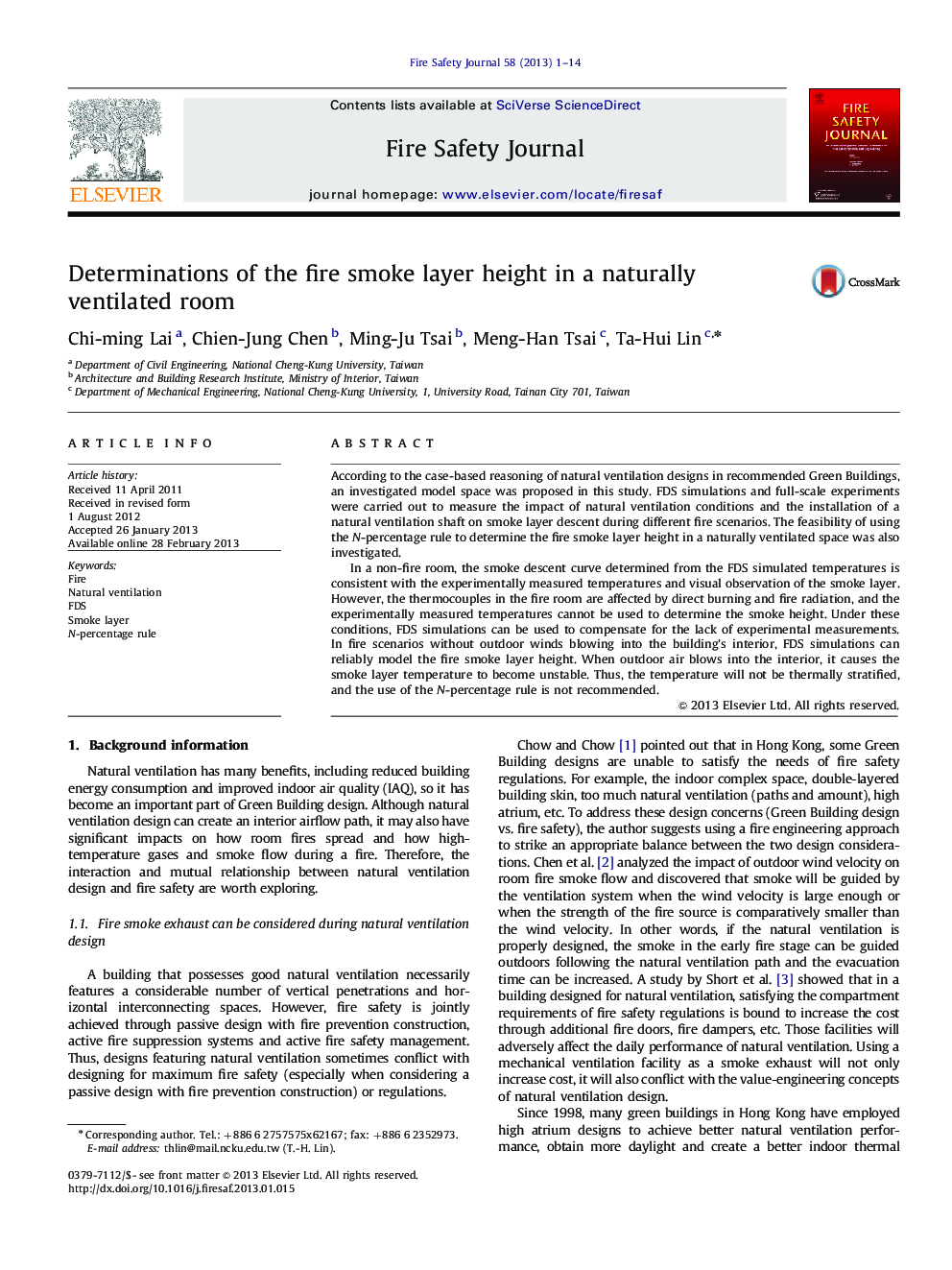| Article ID | Journal | Published Year | Pages | File Type |
|---|---|---|---|---|
| 270031 | Fire Safety Journal | 2013 | 14 Pages |
According to the case-based reasoning of natural ventilation designs in recommended Green Buildings, an investigated model space was proposed in this study. FDS simulations and full-scale experiments were carried out to measure the impact of natural ventilation conditions and the installation of a natural ventilation shaft on smoke layer descent during different fire scenarios. The feasibility of using the N-percentage rule to determine the fire smoke layer height in a naturally ventilated space was also investigated.In a non-fire room, the smoke descent curve determined from the FDS simulated temperatures is consistent with the experimentally measured temperatures and visual observation of the smoke layer. However, the thermocouples in the fire room are affected by direct burning and fire radiation, and the experimentally measured temperatures cannot be used to determine the smoke height. Under these conditions, FDS simulations can be used to compensate for the lack of experimental measurements. In fire scenarios without outdoor winds blowing into the building's interior, FDS simulations can reliably model the fire smoke layer height. When outdoor air blows into the interior, it causes the smoke layer temperature to become unstable. Thus, the temperature will not be thermally stratified, and the use of the N-percentage rule is not recommended.
► An investigated model space came from Green Building design. ► FDS and experiments measure the impact of natural ventilation on smoke layer descent. ► The feasibility of N-percentage rule. ► When outdoor air blows into, the N-percentage rule is not recommended.
